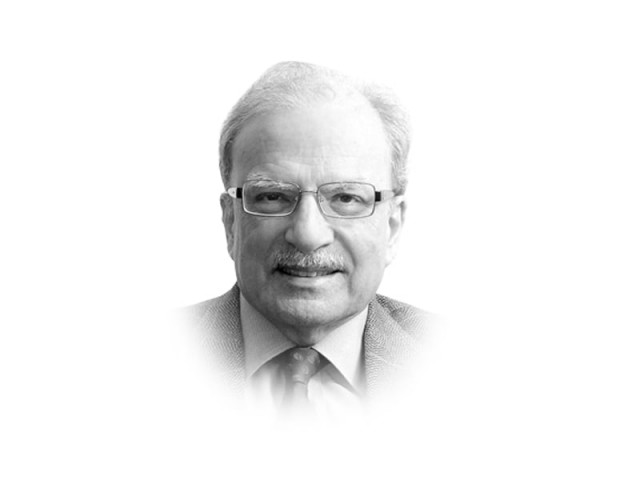A new kind of stimulus for the Chinese economy
Beijing hopes by focusing on investments in the Silk Road, it will provide a new stimulus to its troubled economy

The writer is a former caretaker finance minister and served as vice-president at the World Bank
In May 2015, China’s planning agency, the National Development and Reform Commission, announced 1,043 projects for implementation at a cost of $318 billion. While many of these were focused on building infrastructure across the country’s provinces engaged in international trade, there was a palpable shift in focus to develop inland cities and communication infrastructure. These investments were part of China’s ‘go out’ strategy — to build the Silk Road Economic Belt, also known as the One Belt, One Road programme. The purpose behind this massive investment was to create an economic zone that runs through Asia, Europe, and Africa linking China with the Persian Gulf and the Mediterranean through Central Asia and West Asia. Once completed in about ten to 15 years, this network of roads, railways and pipelines would be able to provide most of the materials, including energy, China needed to import to grow its economy. A land connection with the energy-rich countries in the Middle East and Central Asia was of considerable strategic importance for Beijing. China also had a particular interest in exploiting Afghanistan’s large mineral deposits estimated at one point, by the Pentagon, at one trillion dollars.
Soon after the announcement that China would undertake this massive investment, Beijing reached agreements with two countries — Kazakhstan and Pakistan — to build roads, railways, gas and oil pipelines. In March, Beijing announced support for 33 projects in Kazakhstan at a cost of $23.6 billion. A month later, during a brief visit by President Xi Jinping to Islamabad, China announced that it would invest $46 billion in Pakistan.
During the Chinese leader’s visit, 51 agreements were signed with a dozen public and private sector entities in Pakistan. This is the first donor-financed programme in which finance will flow not from government to government but between Chinese and Pakistani enterprises. Significantly, Xi’s delegation in Islamabad included high officials of the Industrial and Commercial Bank of China, China Development Bank Corporation and EXIM Bank of China — in line with the Chinese Politburo’s aim to have an increased footprint in the Indian Ocean region.
The main components of the programme in Pakistan were to develop rail and road links between the country’s deep water port at Gwadar and Kashgar in the Xinjiang Autonomous Region. Pakistan also awarded a state company in China the contract to manage the port. Previously, the management was with a Singapore enterprise but it was said that the contractor had not carried out the needed work to make the port functional.
Gwadar is 386 kilometres from the Strait of Hormuz through which 30 per cent of the world oil shipment passes daily. It is Beijing’s aim to import the Middle Eastern oil through the Pakistani port, thus reducing reliance on the long, expensive and exposed sea route through the Malacca Straits. In 2013, Rory Mecalf, an American defense analyst, noted that “a recognition of China’s massive seaborne oil-supply vulnerabilities has influenced Beijing’s defense, energy and foreign policies for decades. Whether or not the U.S. Navy has serious plans for the possibilities of blockading China, through the Malacca Strait and other chokepoints, there are presumably those in the Chinese security establishment who assume it does.”
Reconnecting China with Eurasia and South East Asia has become a cornerstone of China’s foreign policy with new banks being set up, billions of dollars of loans being made and diplomatic moves all being launched to ensure its success. Beijing had done detailed planning before making public the full scale of the project. The Asian Infrastructure Investment Bank formally launched in August 2015 will be one of the major conduits of funds for the projects included in this massive construction programme. A multilateral Silk Road Gold Fund will be another source of the needed finance.
The origin of this project goes back to 2009 when Chinese economist Xu Shanda proposed a large plan to create future demand for his country’s exports by providing loans for infrastructure projects that would be handled by Chinese companies using mostly Chinese labour and Chinese construction material. It appears that Beijing had anticipated some of the problems with its economy that surfaced in August 2015 and took the world by surprise. It hopes that by focusing on investments in the Silk Road, it will be able to provide a new kind of stimulus to its troubled economy.
Published in The Express Tribune, September 7th, 2015.
Like Opinion & Editorial on Facebook, follow @ETOpEd on Twitter to receive all updates on all our daily pieces.















COMMENTS
Comments are moderated and generally will be posted if they are on-topic and not abusive.
For more information, please see our Comments FAQ